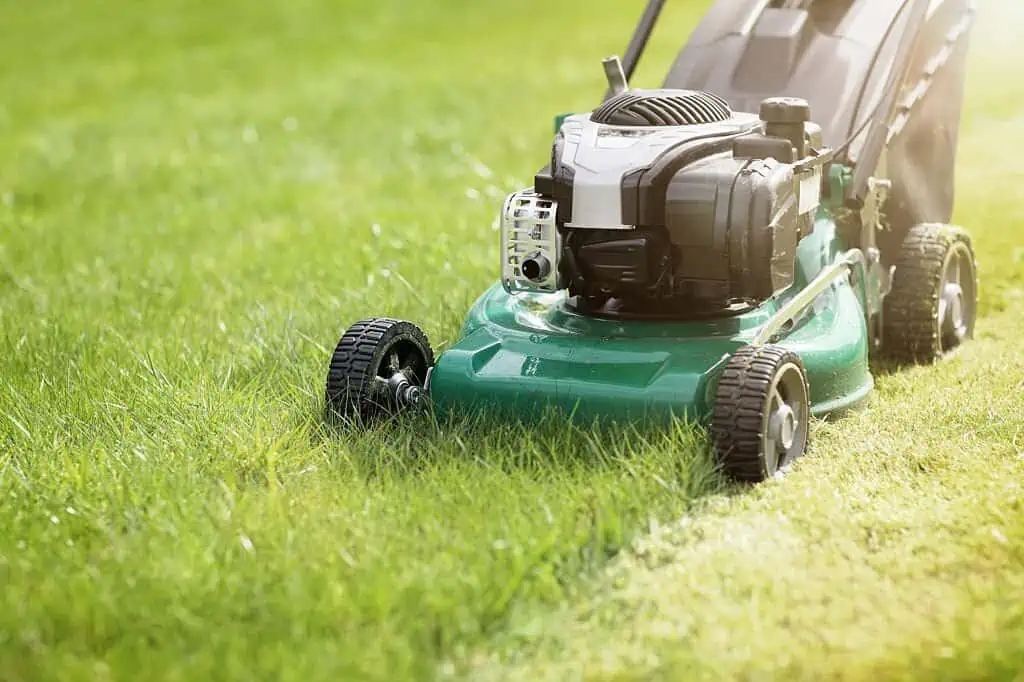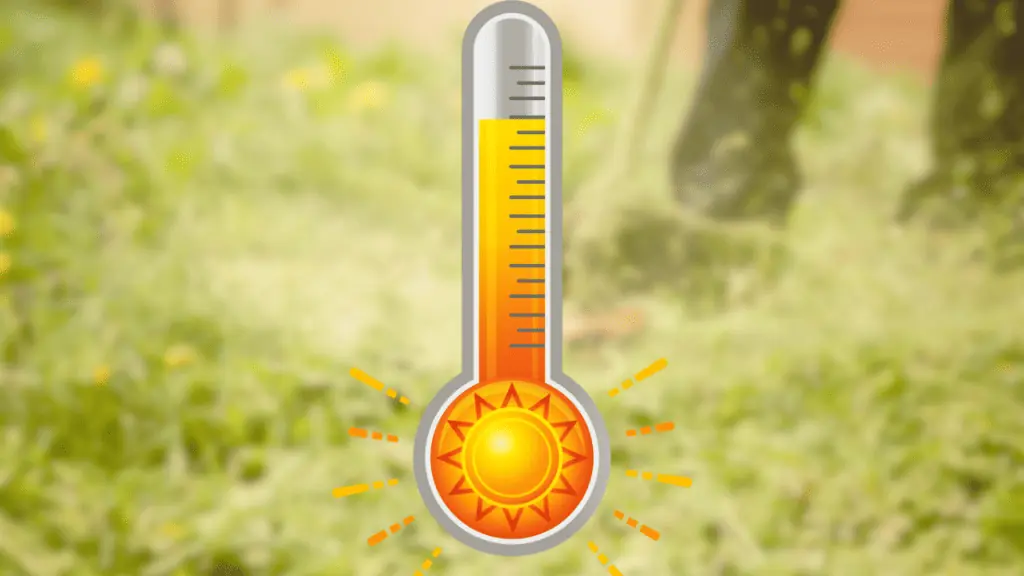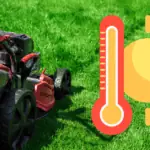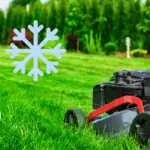Almost every living thing gets affected when sweltering heat reaches very hot proportions. Humans, animals, and even a beautiful landscape covered with grass. While some grass types will survive such conditions, extreme temperatures are generally stressful for lawn care.
Generally, when the heat goes up, moisture is down, and that often means your grass will require some skilled attention to survive. So will cutting grass in 100-degree weather do the trick? Read on to find out!
Should You Cut Grass in 100 Degree Weather?
As tempting as that may sound, experts advise homeowners and gardeners to avoid mowing during extreme heat. Apart from the grass affected by the 100-degree weather, such conditions are not ideal for you.
Also, your grass gets stressed from the heat and drought-like conditions, limiting its ability to recover from cuts. That often leads to more damage over the turf, including “burnt” leaves or blades and brown patches.

How to Cut Grass in 100 Degree Weather
Cutting your grass is an integral part of maintaining its health and appearance. However, in 100-degree weather conditions, a great deal of care is necessary. Here are some stows to help you:
1. Sharpen Mower Blades
To avoid adding more stress to your grass, ensure your mower blades are adequately sharpened and ready to cut. That will help you mow faster and allow the grass to heal faster.
When the blades are dull, and you proceed to cut your grass, you’ll hurt them. The grass gets stressed and develops a pale and brown appearance, leaving it more susceptible to diseases.
2. Follow the 1/3 Rule
First, ensure the 1/3 Rule is in place before cutting grass in extremely hot weather. To paraphrase, the rule states that you should never mow over one-third of the grass height at a go.
Sticking to this rule is easy; when you do so, the lawn gets some measure of cooling. Also, you’ll cut less plant tissue from your grass, allowing it to thrive in less stressful conditions.
3. Keep the Grass Long
In other words, don’t cut your grass too short. 100-degree weather is already bad enough, so you shouldn’t give the lawn any more exposure.
In addition, cutting too short limits the grass’s ability to produce energy for continuous growth. Cut it to a height that lets it develop stronger roots. That way, there’s more support for the grass and increased tolerance to the stress of hot weather.
4. In Drought Conditions, Don’t Cut at all
In harsh weather conditions, drought may set in. No matter the temptation, avoid cutting your grass in such weather conditions. Generally, grasses hardly recover from mowing during drought, leading to more damage to your lawn.
If the forecast suggests that it will rain or you have plans to irrigate, wait until you do so. You can then cut after rainfall or after irrigating. However, avoid mowing wet grass to avoid clumping.
5. Limit Watering
Your grass needs water to thrive and survive. However, avoid going overboard by watering the grass constantly. While 100 degrees is hot, grass thrives better when the soil is dry rather than wet.
When soil is steadily wet, it can cause various problems for the grass and soil organisms, including oxygen deprivation to plant roots and susceptibility to diseases.
What you should do is water deeply without doing so consistently. When you water infrequently, ensure the grass is dry. Also, early morning is ideal before the day gets hotter as noon approaches.
6. Leave Grass Clippings Behind
Do not bag the grass clippings. Use a mulching mower to return the grass clippings to your lawn. Clippings are more organic and beneficial to lawn health because they act as a slow-release fertilizer while decomposing on grass.
7. Limit Traffic
Thanks to the scorching weather, it takes little time for grass to get stressed. But you can avoid this by limiting foot traffic. When you cut your grass, it’s easy to spring back without people stepping on it. Use markings or barriers to avoid people walking on your grass if you must.
8. Avoid Fertilizers
Fertilizing your lawn seems like a great idea, but at 100 degrees, that could prove counterproductive. For this reason, it’s best to avoid using fertilizers during hot weather, including some summer months.
In addition, grass consumes more energy during hot weather conditions, and when you add fertilizer, it becomes twice as much. Doing so will cause more stress to your lawn. If you must apply fertilizer, do so in the fall or before the weather gets hot.
Why Your Lawn Loses Color in 100 Degree Weather
Yellow, brown, and unwholesome colors can make your lawn look terrible. Your efforts at maintaining a lush, green lawn will be defeated. There are reasons for this, and here are the most common ones:
Problem With Watering
Watering when it’s 100 degrees presents a problem when you don’t get the schedule right. Since the weather is already hot, try not to water too light or heavy. The time of day is also essential, with the morning being the most preferred time to water grass.
Poor Mowing
Mowing poorly will mean your grass loses its color. It’s best to cut the grass long rather than short. This will generally strengthen the grass against hot weather conditions.
Pests and Diseases
When the weather is hot, the risk of pests and diseases harming your lawn increases. Watering also plays a role here and draws pests that can leave your grass, swapping its green appearance for bad colors.
Final Thoughts
Now you know how to cut grass in 100-degree weather. These simple steps and other relevant information will help you improve and maintain the overall condition of your grass.
Ensure you do not overwater the lawn or apply fertilizers in such situations. When you do so, you’d be exposing the grass to adverse conditions.
When you cut, keep your grass height high with your mower blade adjusted to fit, and leave the clippings behind. That’s better than applying fertilizers.






